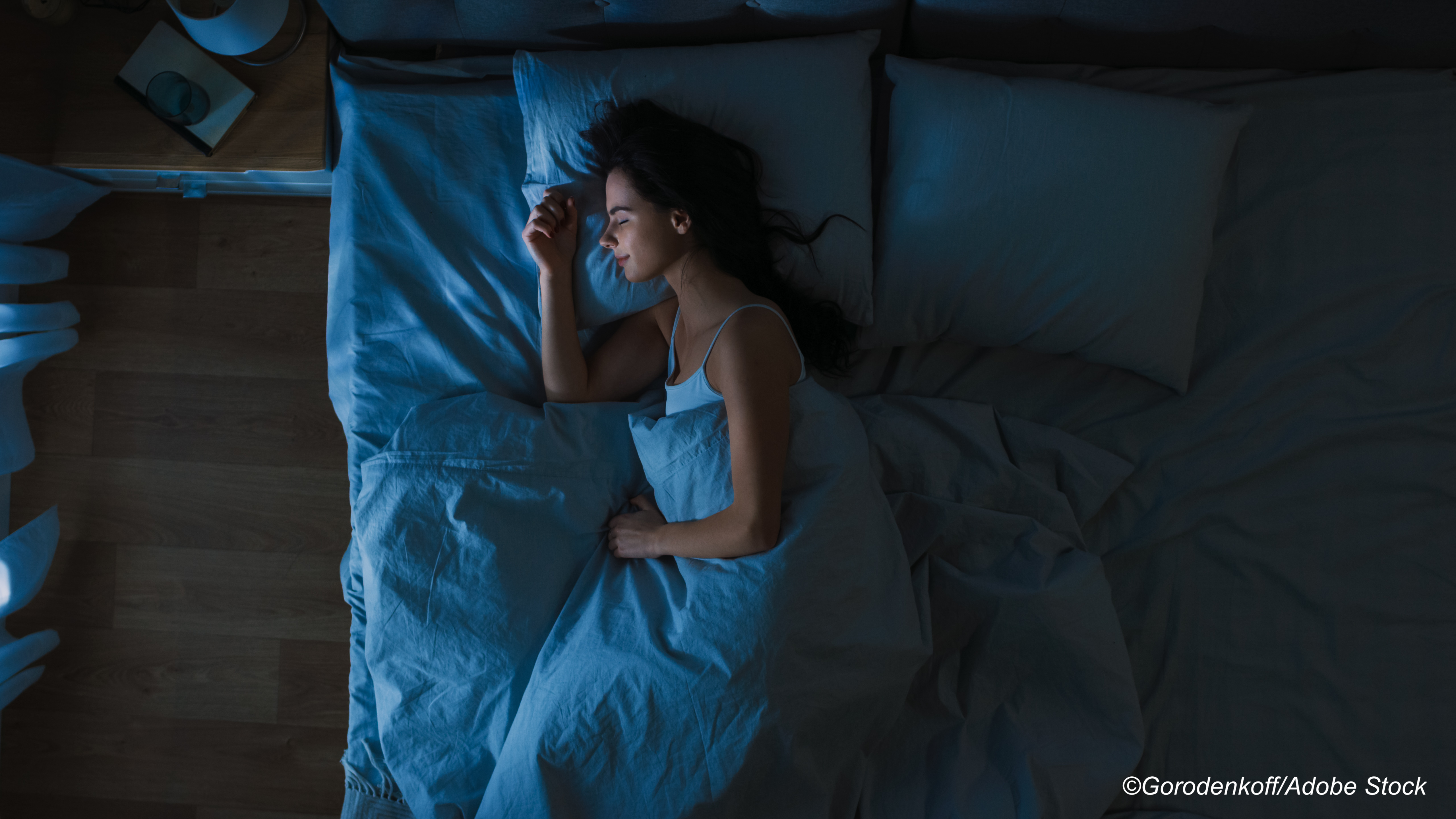A meta-analysis found impaired sleep quality and poor sleep architecture in people with migraine.
“People with migraine, particularly those with chronic migraine, report worse subjective sleep quality than healthy individuals,” wrote Jan Hoffmann, MD, PhD, of King’s College London in England, and co-authors in Neurology. “Adults exhibit significantly less REM sleep, whereas children also show significantly reduced sleep time, shorter sleep onset and more wake than controls.”
“The interplay between migraine and sleep is likely to be complex and remains poorly understood,” they added. “However, this meta-analysis emphasizes the importance of assessing and treating sleep as an integrated part of migraine treatment.”
The authors searched databases through December 2020 for case-controlled studies that measured polysomnography (PSG) or Pittsburgh Sleep Quality Index (PSQI) in patients with migraine, either episodic or chronic, with or without aura. They included 21 studies that measured PSQI in adults, six that measured PSG in adults, and five that measured PSG in children. PSQI was not assessed in pediatric patients.
Study quality was assessed with the Newcastle-Ottawa scale, with range of 0-9 and 9 indicating less risk of bias. “The overall mean study quality score was 5/9, and this did not moderate any of the results, and there was no risk of publication bias,” the researchers wrote.
Subjective sleep quality was measured using the PSQI, which asks questions in seven sleep dimensions (subjective sleep quality, sleep latency, sleep duration, habitual sleep efficiency, sleep disturbances, the use of sleep-promoting medication, and daytime dysfunction). Higher scores indicate poorer sleep quality, with a range of 0-21.
Objective sleep architecture was measured using PSG and included total sleep time in minutes, sleep efficiency percent, percent wake, percent of total sleep time spent in REM sleep, and sleep onset latency.
The primary outcomes—global PSQI score and PSG parameters—were expressed as Hedge’s g effect size for people with migraine versus healthy non-migraine controls. Effect sizes were interpreted conventionally as small (0.2), medium (0.5), or large (0.8).
The meta-analysis showed:
- Adults with migraine had higher PSQI scores than healthy controls (g=0.75, 95% CI 0.54-0.96, P<0.001). This effect was larger in those with chronic than episodic migraine versus healthy controls, with g=1.03 (95% CI 0.37-1.01, P<0.001) and g=0.63 (95% CI 0.38-0.88, P<0.001) respectively.
- Adults and children with migraine displayed a lower percentage of REM sleep, with g=-0.22 (95% CI −0.41 to −0.04, P=0.017) and g=−0.71 (95% CI −1.34 to −0.10, P=0.025), respectively, than controls.
- Pediatric patients displayed less total sleep time (g=−1.37, 95% CI −2.66 to −0.10, P=0.039) more wake time (g=0.52, 95% CI 0.08-0.79, P<0.001), and shorter sleep onset latency (g=−0.37, 95% CI −0.54 to −0.21, P<0.001) than controls.
In a 2007 report, half of the 76% of patients who reported a trigger for their migraine cited sleep disturbance. PSG results in a 2014 study differed little for a subgroup who had migraine onset that sometimes occurred in sleep compared with controls, except for a significantly increased awakening index. In that study, both tension-type headache and migraine patients reported more anxiety and sleep-related symptoms. A link between high PSQI scores indicating poor sleep quality and patients with frequent migraine, with and without aura, was reported in a 2016 study.
“Given it is very hard to predict the timing of a migraine attack, in-laboratory PSG studies have not been traditionally feasible for larger numbers of patients with episodic migraine,” observed Angeliki Vgontzas, MD, of Brigham and Women’s Hospital in Boston, who wasn’t involved with the meta-analysis, in an email to BreakingMED.
“Therefore, significant methodologic differences in polysomnography studies limit the generalizability and interpretation of objective findings in those with episodic migraine,” she wrote.
Work done by Vgontzas and others suggests mechanisms may be different for people with episodic versus chronic migraine. “In those with episodic migraine, patient-reported sleep complaints prior to attacks may be subtle and may reflect more early activation of the brainstem and the hypothalamus, rather than a trigger,” Vgontzas noted.
“The relationship of sleep with chronic migraine is likely quite different and may also involve changes in circadian rhythm due more to contributions from psychiatric comorbidities and chronic insomnia,” she added.
The meta-analysis does not provide evidence of a direct relationship between migraine and sleep, Hoffmann and co-authors pointed out. “Do people with migraine experience poor sleep due to attacks or are they experiencing attacks due to poor sleep?” they wrote. The study also did not account for the use of medications affecting the sleep cycle.
-
Adults with migraine had worse subjective sleep quality than healthy controls, indicating impaired sleep quality and poor sleep architecture in people with migraine, and the effect was larger in people with chronic than episodic migraine, a meta-analysis showed.
-
Polysomnography showed adults and children with migraine displayed a lower percentage of REM sleep than controls, and pediatric patients had less total sleep time, more wake time, and shorter sleep onset latency.
Paul Smyth, MD, Contributing Writer, BreakingMED™
This study was supported by the Medical Research Council and the Migraine Trust.
Hoffmann is consulting for and/or serves on advisory boards of Allergan, Autonomic Technologies Inc., Cannovex BV, Chordate Medical AB, Eli Lilly, Hormosan Pharma, Lundbeck, Novartis, Sanofi, and Teva. He has received honoraria for speaking from Allergan, Autonomic Technologies Inc., Chordate Medical AB, Novartis, and Teva. He received personal fees for Medico-Legal Work as well as from Sage Publishing, Springer Healthcare, and Quintessence Publishing. He receives research support from Bristol-Myers-Squibb.
Cat ID: 35
Topic ID: 82,35,730,35,422,138,50,925




Create Post
Twitter/X Preview
Logout